Transforming your living space is an adventure that ignites creativity and brings a unique sense of joy. Whether you’re a beginner just starting to explore the world of interior design or an experienced decorator seeking fresh inspiration, “13 Modern Wall Art Ideas For Every Room” is your passport to turning any room into a masterpiece.
In this guide, you’ll discover a curated selection of wall art ideas that promise to breathe new life into your home, making every space feel vibrant and personal. Each idea is a practical gem, designed to be both accessible and adaptable, ensuring you feel empowered to make impactful changes with ease.
Imagine the satisfaction of watching your home evolve, each room telling its own story through carefully chosen art. With these ideas, not only will you enhance your aesthetic, but you’ll also boost the atmosphere of your living space, creating a haven that reflects your personal style and taste.
Mix and Match Art Styles
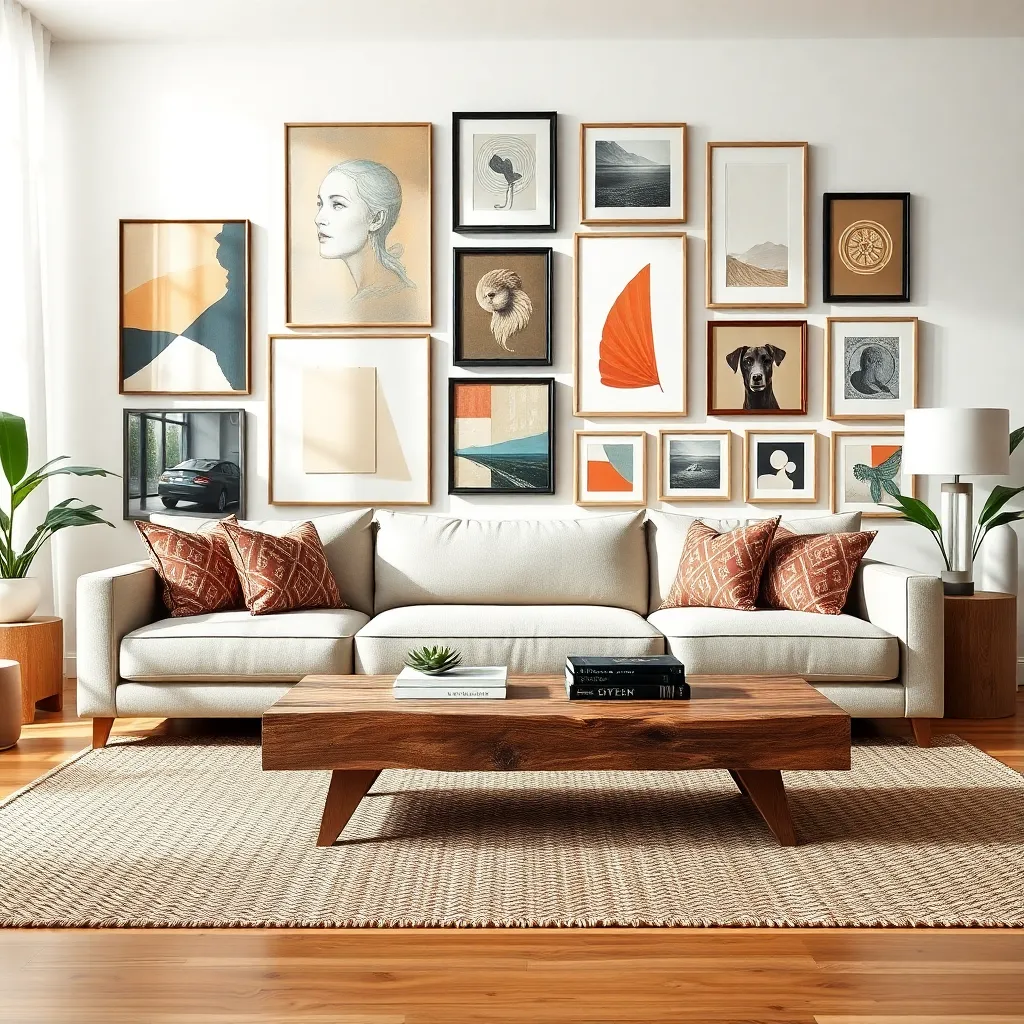
To create a dynamic and visually captivating space, consider blending different art styles on your walls. Start by choosing a dominant theme or color that ties the pieces together, ensuring a sense of unity even amidst diversity.
Begin with a foundation of neutral tones for your walls to allow the art to stand out, then introduce bold, contrasting frames for a modern touch. Consider layering contemporary abstract pieces with classic portraits or landscapes to add depth and interest.
When arranging these mixed styles, aim for a balanced composition by varying the sizes and shapes of the art pieces. A gallery wall is an excellent way to showcase a mix of styles; experiment with different layouts on the floor before committing to a final arrangement on the wall.
For a cohesive look, pay attention to the furniture around the art. Select furnishings that complement the colors or themes of your artwork, such as a mid-century modern sofa paired with a bold, abstract painting, to create a harmonious environment.
Create a Gallery Wall
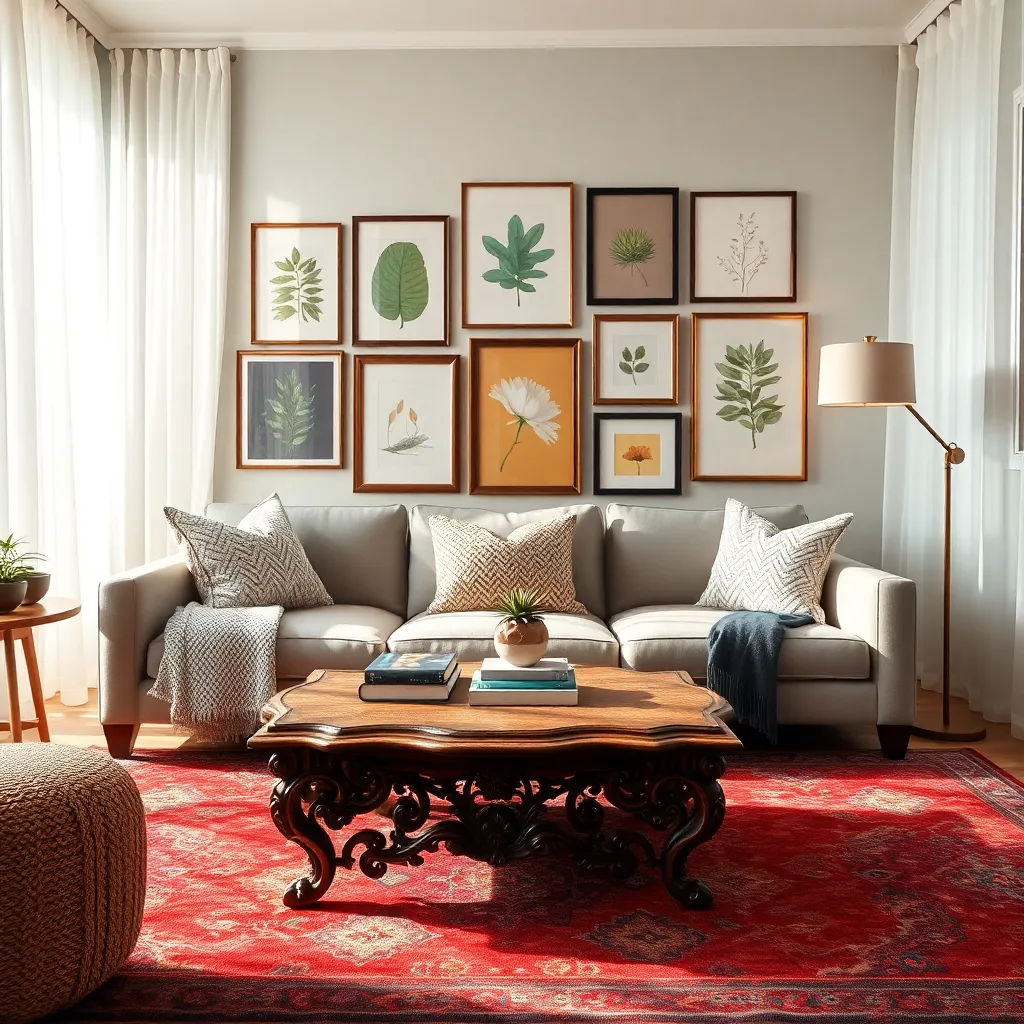
Creating a gallery wall is an excellent way to add character and personality to your space. Start by selecting a mix of art pieces that resonate with you, such as prints, photographs, and paintings, ensuring a variety of sizes for visual interest.
Begin by laying out your artwork on the floor to experiment with different arrangements before committing to a layout on the wall. Consider using a central piece as a focal point and arrange smaller pieces around it to create balance.
For a cohesive look, choose frames that complement each other and the room’s decor. Opt for a uniform color scheme or mix metallics and woods for a more eclectic feel.
Once you’ve decided on the arrangement, use a level and ruler to ensure even spacing between each piece. A general guideline is to keep the spacing between frames at about two to three inches for a clean, polished appearance.
For those looking to add an advanced touch, consider incorporating other elements such as mirrors or sculptural objects into the gallery wall. This can add depth and texture, making the gallery wall a true focal point of the room.
Finally, don’t be afraid to refresh your gallery wall over time, swapping out pieces or rearranging them to keep the display dynamic and reflective of your evolving taste. This flexibility allows your space to grow and change alongside you.
Choose Oversized Statement Pieces
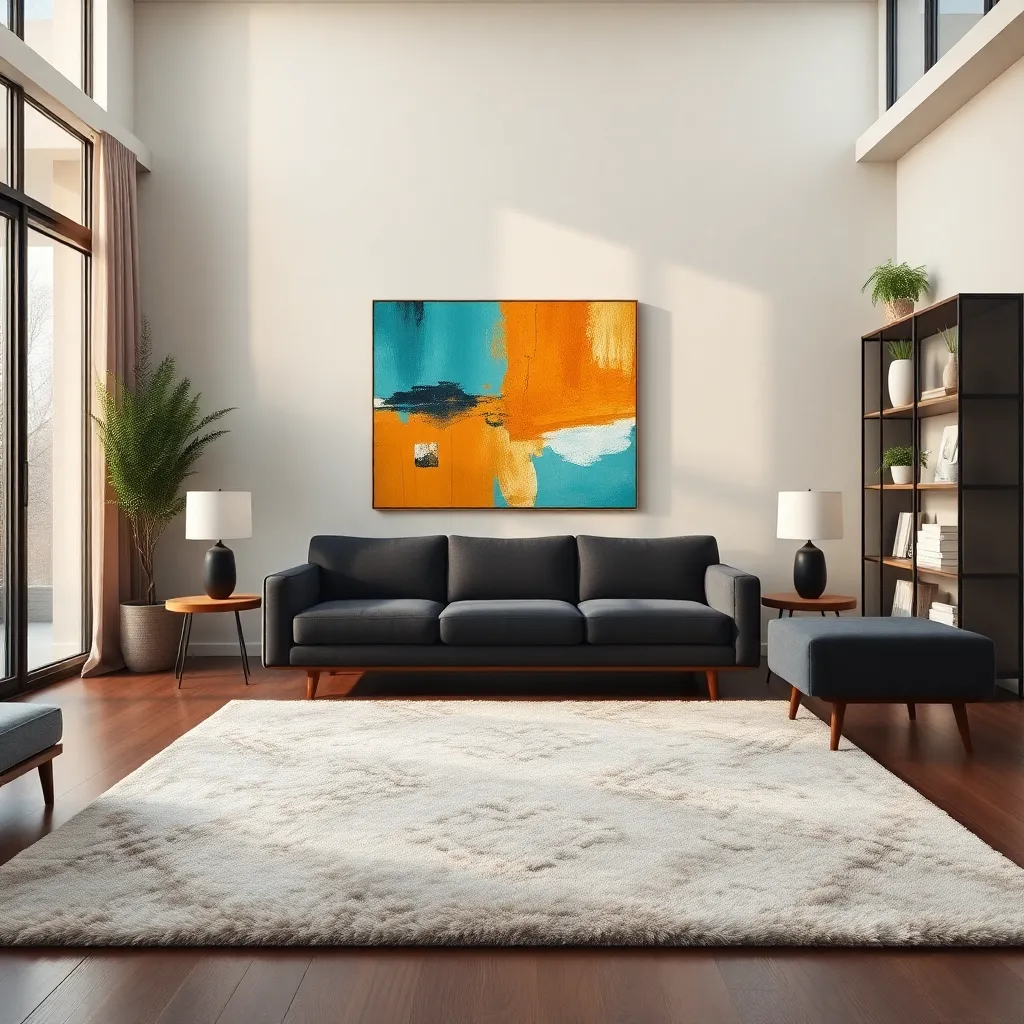
Incorporating oversized statement pieces into your wall art can dramatically transform any room. These large-scale artworks serve as focal points, drawing the eye and adding depth to your interior design.
When selecting an oversized piece, consider the room’s existing color palette to ensure harmony. Choose a piece with complementary colors or a striking contrast to make a bold statement.
Placement is key to maximizing the impact of an oversized artwork. Hang it at eye level, ensuring it is centered in the space, whether above a sofa or a mantelpiece.
For those looking to experiment, try mixing textures by selecting a canvas painting or a tapestry as your statement piece. This adds an extra layer of interest and can make the room feel more dynamic and inviting.
Incorporate 3D Wall Sculptures
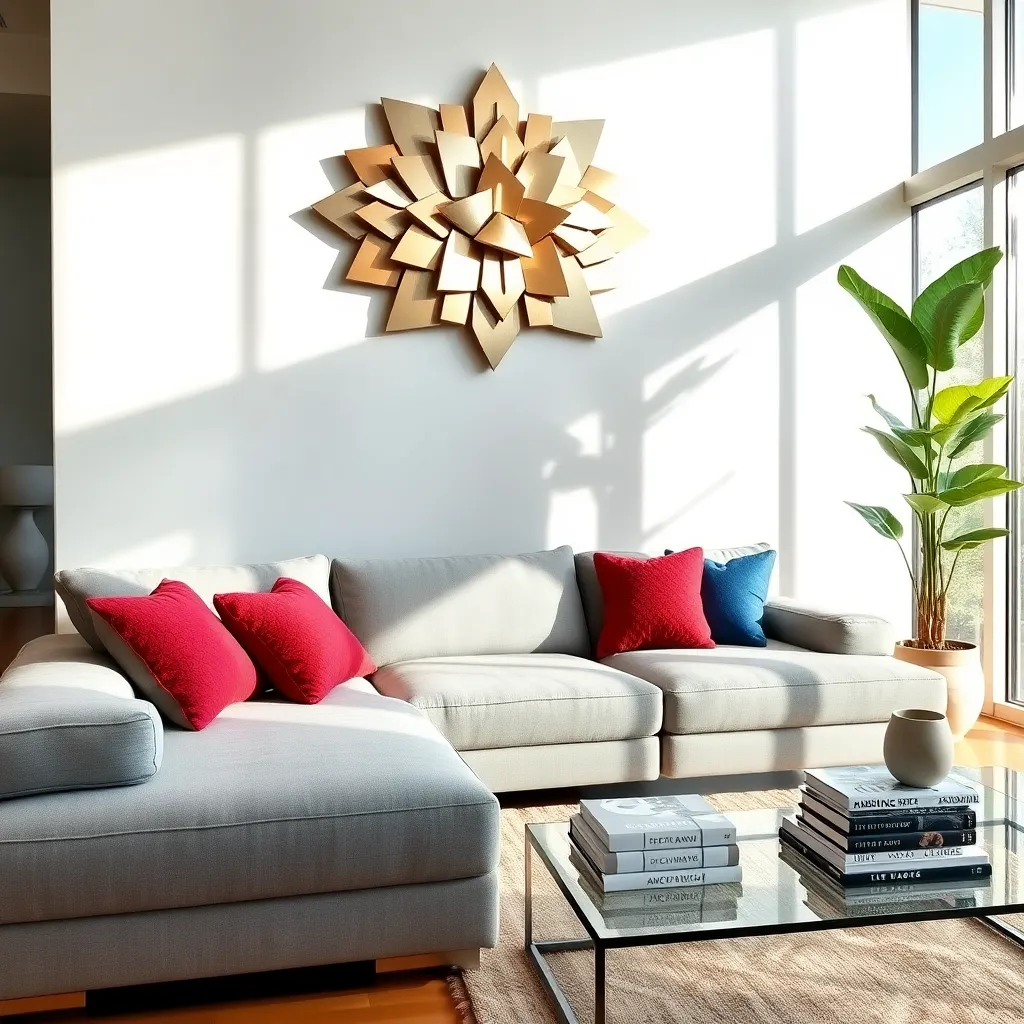
3D wall sculptures can add a captivating dimension to any room, offering a unique blend of texture and depth. Selecting pieces made from materials like metal, wood, or ceramic can introduce varied textures that complement your existing decor.
Consider the scale and placement of your sculptures to ensure they enhance, rather than overwhelm, the space. For smaller rooms, opt for a single, bold piece that acts as a focal point, while larger spaces can accommodate multiple sculptures arranged in a cohesive layout.
To create a harmonious look, pair your 3D sculptures with complementary colors found in your room’s furnishings or other decorative elements. For example, a bronze sculpture can beautifully echo the tones of a walnut coffee table or copper light fixtures.
Advanced decorators might experiment with lighting to accentuate their 3D wall sculptures, using strategically placed spotlights to cast intriguing shadows. This technique not only highlights the artwork but also adds layers to the room’s ambiance, making it feel dynamic and engaging.
Opt for Minimalist Line Drawings
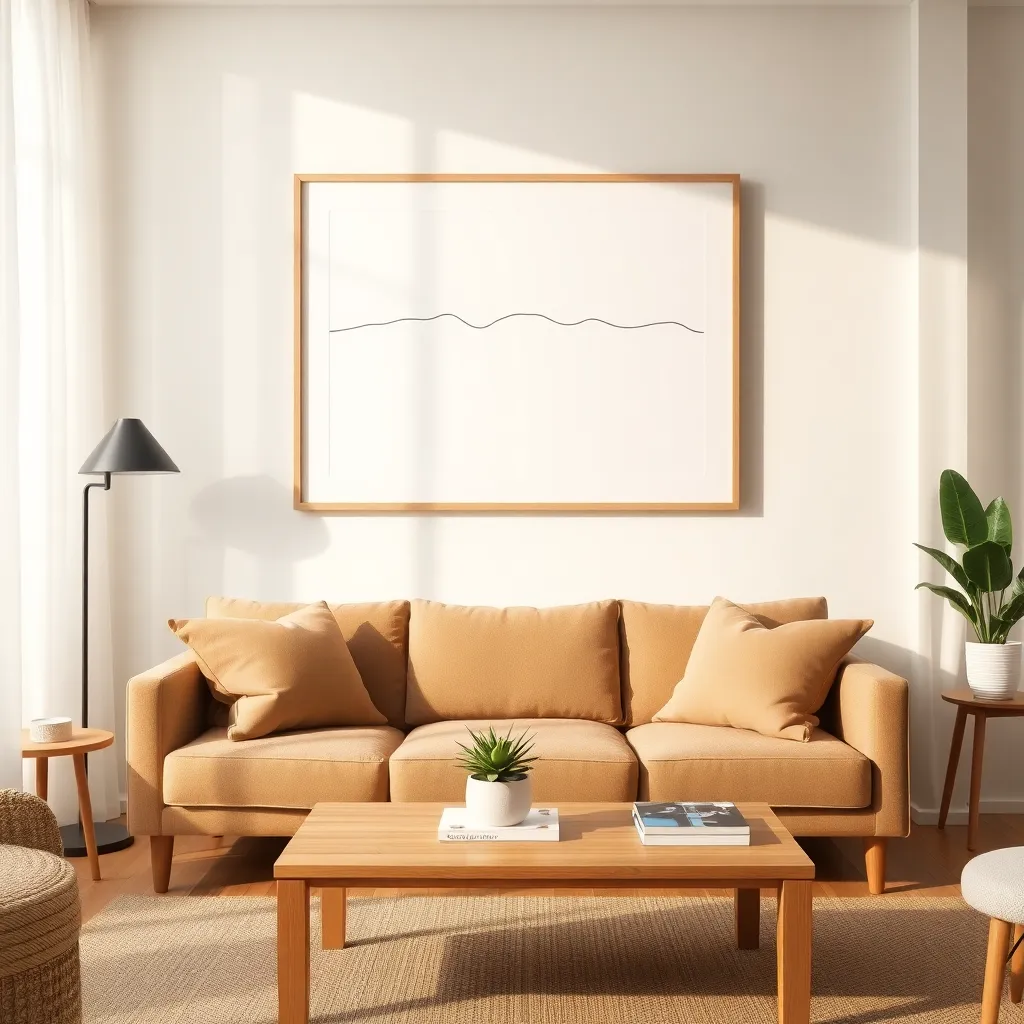
Minimalist line drawings are a versatile addition to any modern home, offering a sophisticated yet understated aesthetic. These pieces typically feature simple, monochromatic lines that can easily complement a variety of styles, from Scandinavian to industrial.
To incorporate minimalist line drawings into your space, consider selecting pieces with clean lines and open spaces that echo the room’s existing color palette. Choose frames with sleek, neutral finishes like black, white, or natural wood to maintain the minimalist vibe.
Think about the placement of these artworks to maximize their impact. For a balanced look, hang them at eye level in a symmetrical arrangement, or create an asymmetrical gallery wall for a more dynamic display.
For beginners, a single large piece can serve as a stunning focal point above a sofa or bed. Advanced decorators might experiment by layering smaller drawings alongside other art forms to add depth and texture.
Hang Large Abstract Canvases
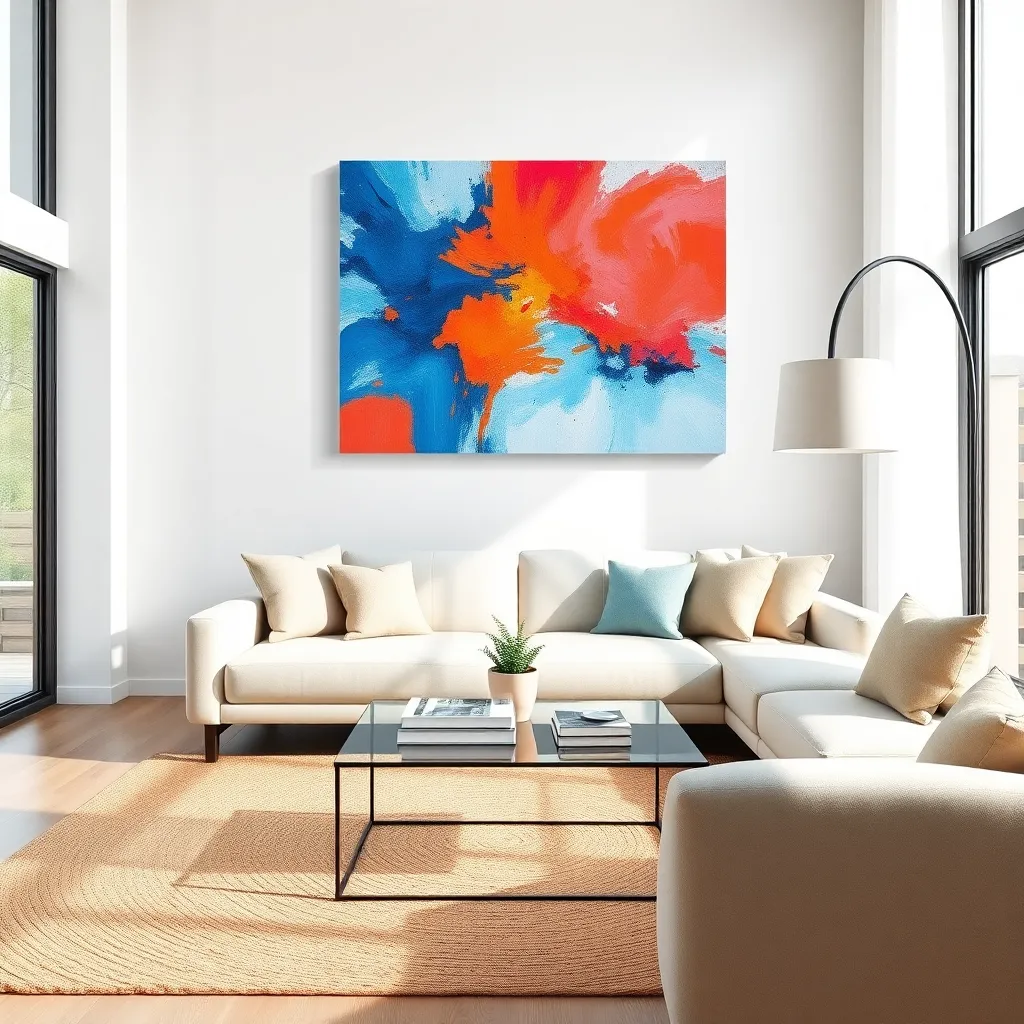
Large abstract canvases can create a stunning focal point in any room, offering a dramatic splash of color and energy. To maximize their impact, consider hanging them on a wall with a simple, neutral backdrop, which will allow the artwork’s colors to pop and become the centerpiece of the decor.
When selecting a canvas, think about the color palette of your space and choose a piece that either complements or contrasts beautifully. For a cohesive look, pick up one or two colors from the canvas and incorporate them into your room through accessories like cushions, throws, or vases.
Placement is key to ensuring your large abstract canvas enhances the room’s flow. Hang it at eye level for sitting or standing areas—around 60 inches from the floor to the canvas’s center is a good rule of thumb. This placement will ensure that the artwork is comfortably viewed from different angles within the room.
For a more advanced touch, consider layering the canvas with other design elements. You might place a slim console table beneath it with a few curated decor items, such as a small sculpture or a set of books, to create a sophisticated vignette. This not only adds depth to your decor but also ties the artwork seamlessly into the rest of the room.
Utilize Textured Art Pieces
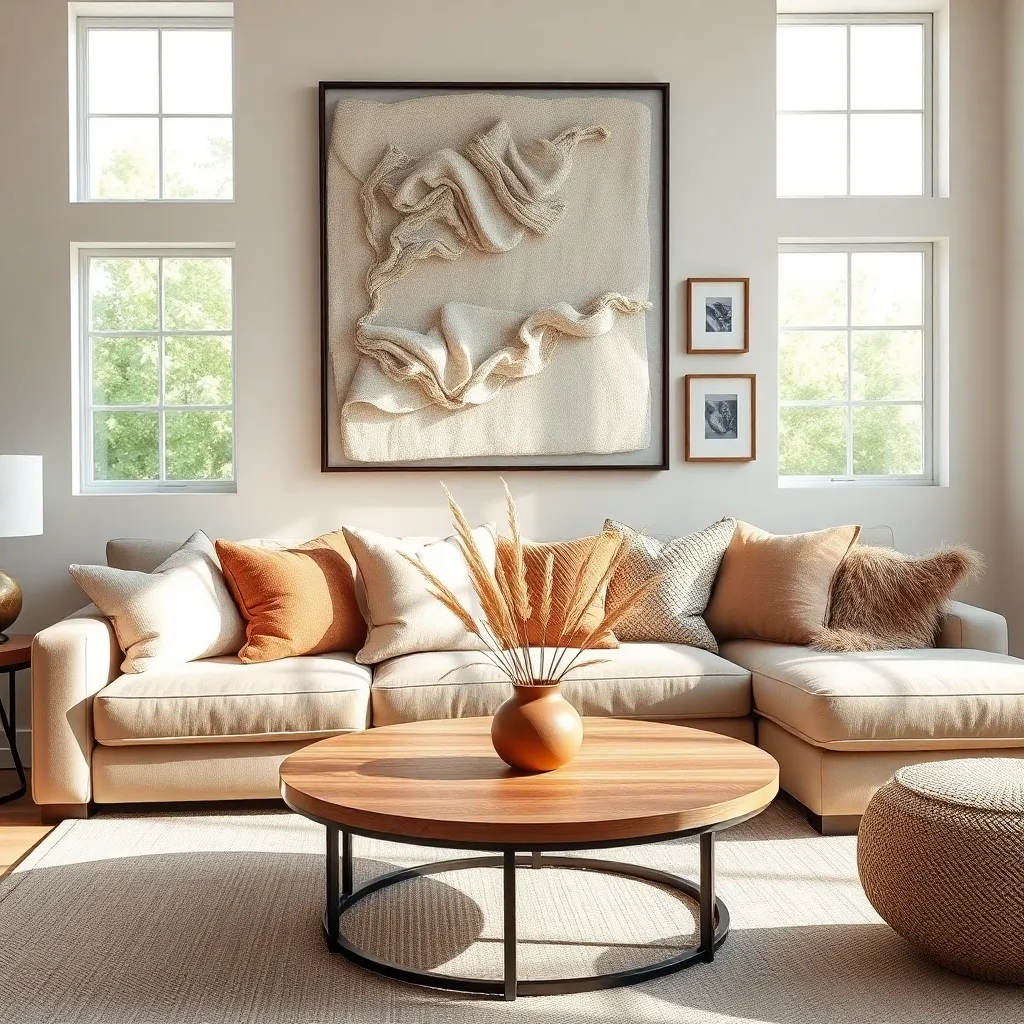
To bring depth and character to your walls, consider incorporating textured art pieces. These artworks can range from woven tapestries to three-dimensional sculptures, adding a tactile element that draws the eye and invites touch.
When selecting textured art, consider the overall color scheme of your room. Neutral-toned pieces work well in minimalist spaces, while vibrant, colorful textures can enhance a more eclectic design.
Placement is key for textured art to make a statement. Hang textured pieces at eye level to ensure they become a focal point and engage viewers as they move through the space.
For an advanced touch, try combining multiple textures in a gallery wall format. Mix and match different materials such as wood, fabric, and metal to create a dynamic and layered look that showcases your personal style.
Experiment with Wall Murals
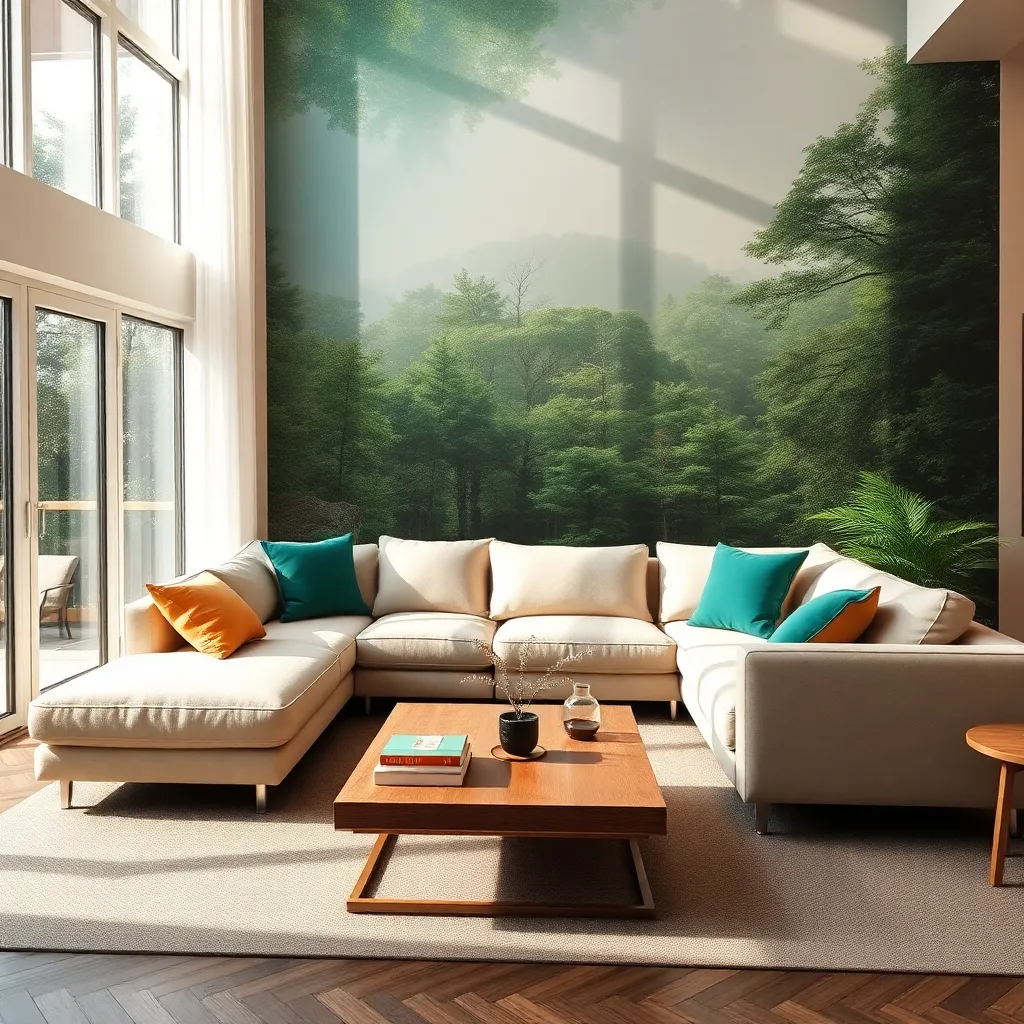
Wall murals offer an exceptional opportunity to transform a room by creating a focal point that truly captivates. Start by considering the room’s function; for instance, a serene landscape can bring calm to a bedroom, while a bold geometric design can energize a living area.
For beginners, choose a peel-and-stick mural for easy application and removal, which suits renters or those who frequently update their decor. More experienced decorators might opt for a painted mural, which allows for personal creativity and a unique touch.
Placement is crucial; murals work best on the largest wall in a room to maximize their impact. Ensure the rest of the decor complements the mural’s color scheme; for instance, echo the mural’s dominant hues in your throw pillows or area rug for a cohesive look.
Advanced decorators can experiment with layering, such as adding floating shelves or hanging art pieces over the mural for added depth and interest. This technique can make a large mural feel integrated with the room’s decor, rather than an isolated feature.
Use Typography for Impact
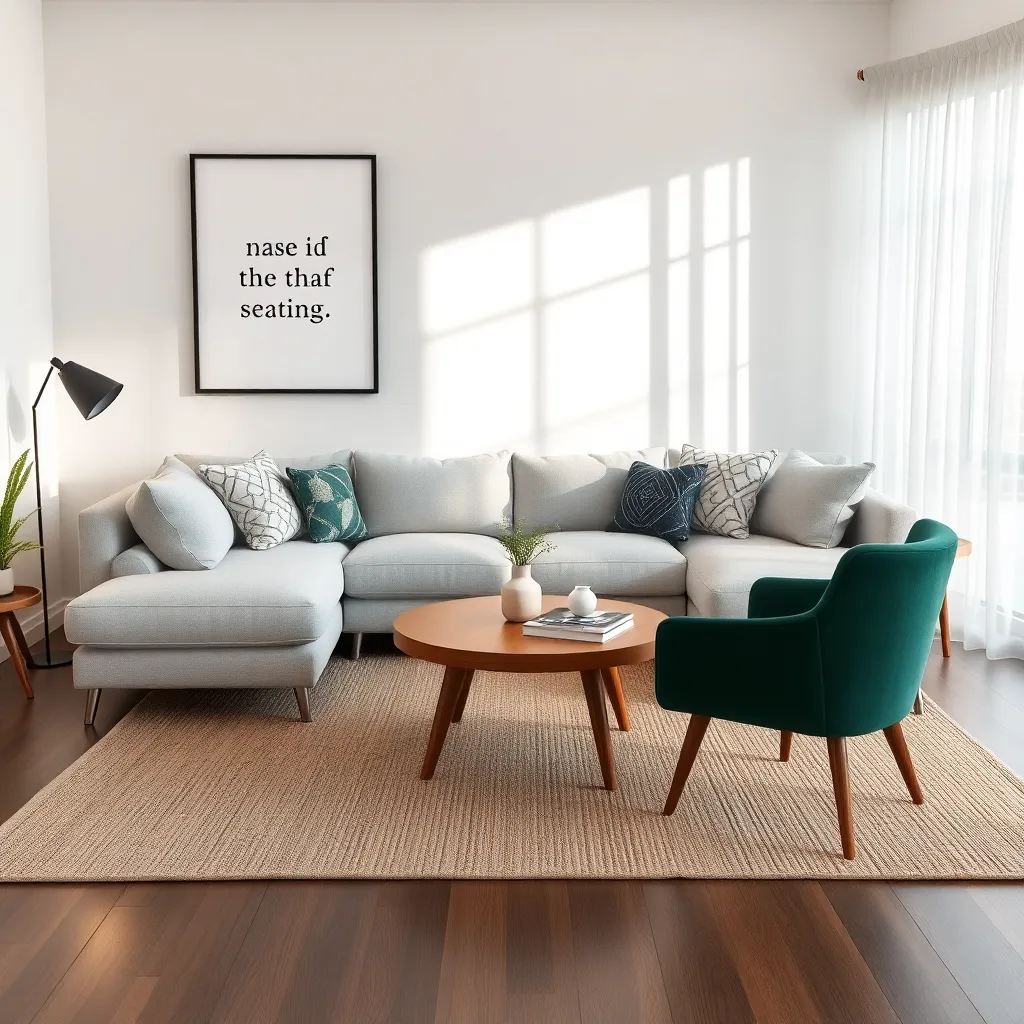
Typography as wall art can create a stunning focal point in any room. Choose fonts that reflect your personal style, whether that be bold and modern or elegant and classic.
For beginners, start with a simple statement piece, like a large canvas with a favorite quote. Place it above a sofa or bed to draw the eye and add character to the space.
Advanced decorators can experiment with a gallery wall that incorporates typography alongside other art pieces. Mix and match frame styles and sizes to add depth and texture to your display.
Consider the color palette of your typography art to ensure it complements your room’s existing decor. Black and white prints are timeless, but don’t shy away from using vibrant colors to energize a space.
Finally, pay attention to the alignment and spacing of your typography art. Aligning pieces with existing furniture lines or architectural elements can create a harmonious and balanced look.
Layer Frames for Depth
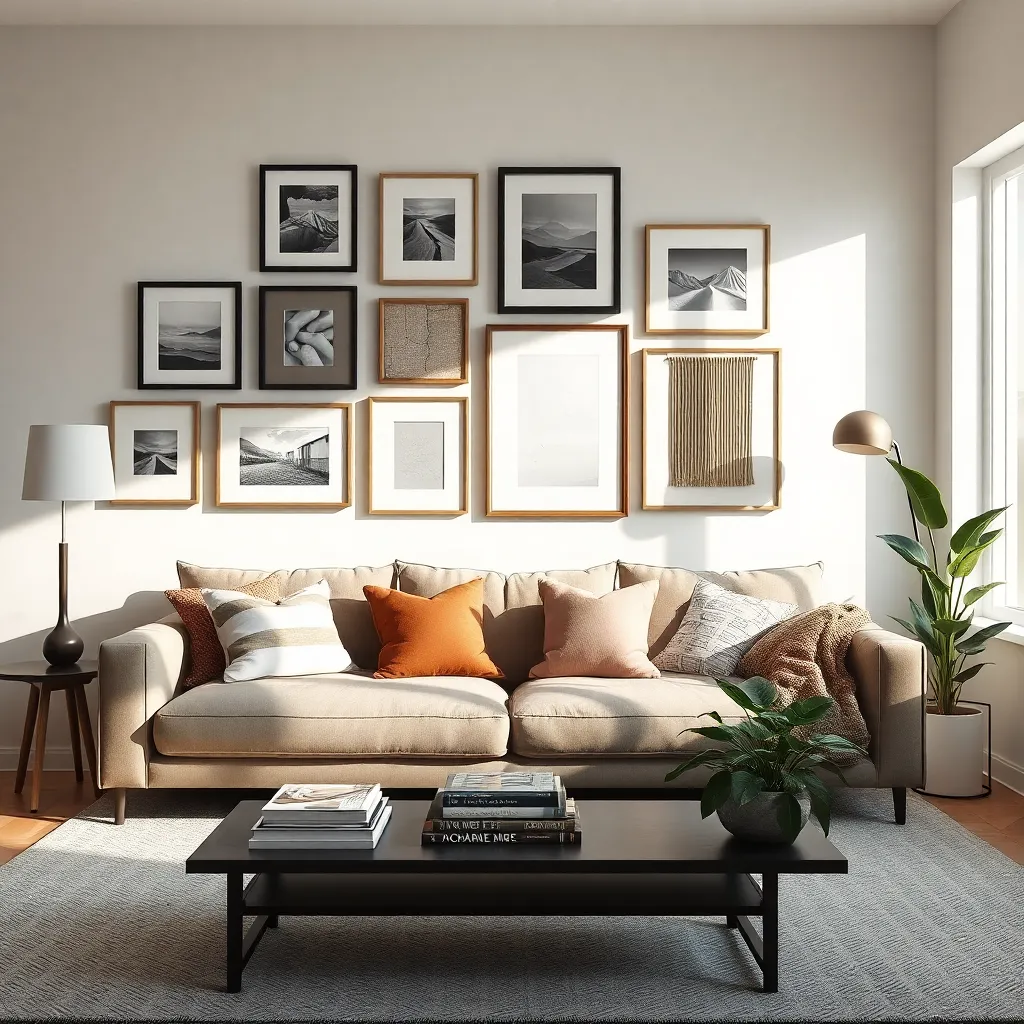
Layering frames is an excellent way to add depth and visual interest to your walls. Start by selecting frames of different sizes and finishes, such as matte black, brushed gold, or natural wood, to create a dynamic look.
Arrange these frames by overlapping them slightly, which will give your display a more cohesive and intentional feel. Consider using a mix of artwork and photos to add personal touches and varied textures to your arrangement.
For beginners, start with a few frames and gradually build your collection as you find pieces that resonate with you. A good rule of thumb is to keep the bottom edge of the frames aligned to maintain a sense of order amidst the layering.
Advanced decorators might experiment with unconventional frame shapes or shadow boxes to enhance the three-dimensional effect. Experiment with colors that complement your existing decor; for example, use frames that pick up accent colors from your furniture or rugs.
Display Rotating Seasonal Art
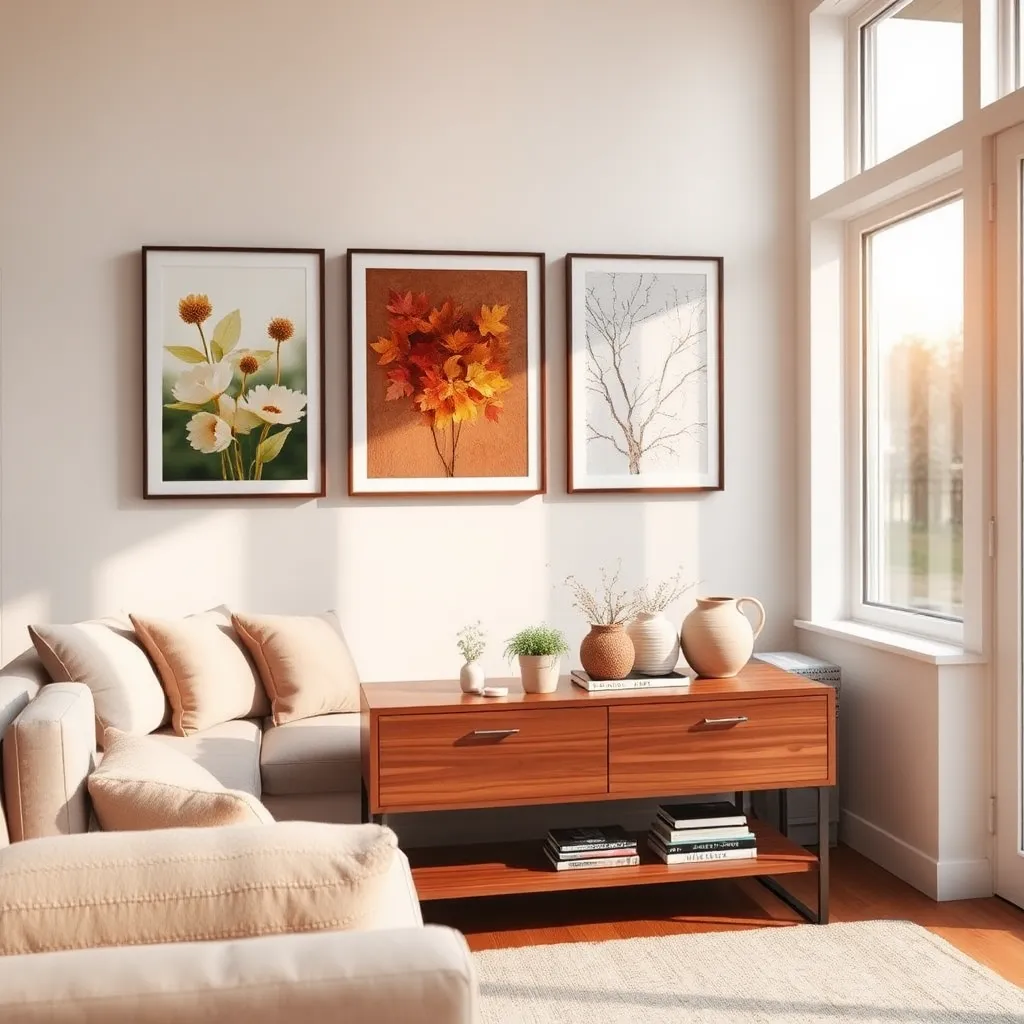
Displaying rotating seasonal art can instantly refresh a room and reflect the changing moods of the year. Start by choosing a neutral wall color, like a soft gray or warm beige, that will complement a range of art pieces throughout the seasons.
For a seamless transition between artworks, consider using interchangeable frames that make swapping out pieces quick and easy. Opt for frames with a simple design in materials such as wood or metal, which can adapt to both modern and traditional art styles.
Beginner decorators might start with a small collection of prints or paintings that represent the four seasons, ensuring each piece has a distinct color palette that echoes seasonal changes. Advanced decorators can enhance this concept by incorporating mixed media pieces, like fabric art or photographs, that add texture and depth to the display.
Placement is crucial; aim to hang the art at eye level for the best impact, usually around 57 inches from the floor to the center of the art. For larger walls, consider grouping smaller pieces in a gallery-style arrangement, adjusting the layout slightly with each seasonal change to keep the display dynamic and engaging.
Integrate Art with Shelving
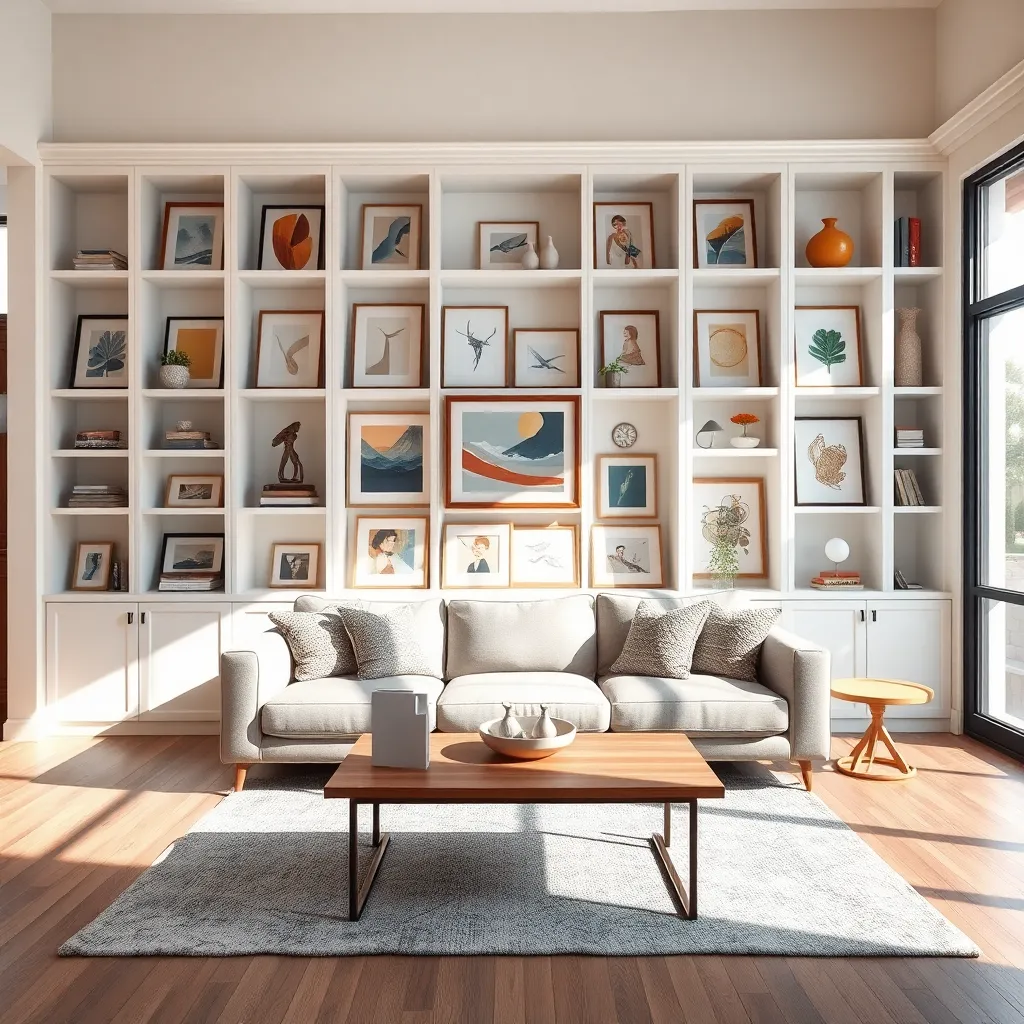
Incorporating art with shelving can transform any room into a sophisticated gallery-like space. Begin by choosing shelves that complement the existing decor, such as sleek metal shelves for a modern look or warm wood for a more rustic feel.
Strategically place art pieces of varying sizes on the shelves to create visual interest. Use a mix of framed prints, sculptures, and small canvases to add depth and texture to the arrangement.
Layering is key to achieving a dynamic display. Place larger pieces at the back and smaller items in front, ensuring that each piece is visible and contributes to the overall composition.
For a cohesive look, consider a consistent color palette that ties the art and shelving together. This could mean choosing artworks that echo the room’s accent colors or incorporating subtle hues that harmonize with the surrounding decor.
Highlight Art with Lighting
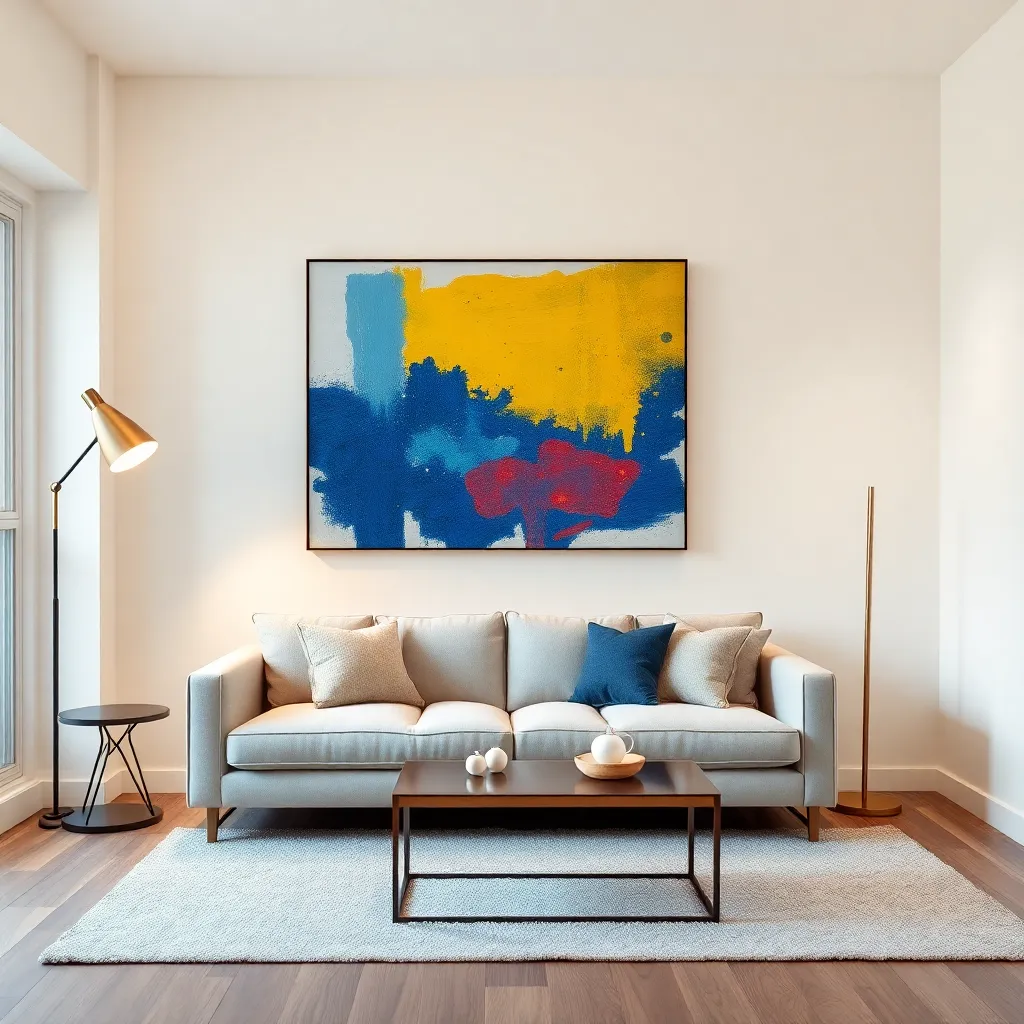
To truly make your wall art stand out, consider the impact of strategic lighting. Using adjustable track lighting allows you to focus attention on specific pieces, creating a gallery-like atmosphere in your home.
Wall sconces are another excellent option for highlighting artwork. These fixtures can be positioned on either side of your art to provide balanced illumination and enhance the piece’s colors and textures.
For a more sophisticated look, try installing a picture light directly above the artwork. This type of lighting fixture casts a warm glow over the piece, adding an elegant touch to your space.
If you’re working with a contemporary or minimalist aesthetic, consider using LED strip lights. These sleek, energy-efficient lights can be placed behind or below your art to create a subtle, halo-like effect that adds depth and intrigue.
Conclusion: Growing Success with These Plants
As we’ve journeyed through the 13 modern wall art ideas, each concept serves as a metaphor for vital relationship principles. We’ve explored the importance of personalization and uniqueness, akin to understanding and appreciating each partner’s individuality. The blend of colors and textures mirrors the balance and harmony essential in nurturing a healthy relationship. From strategic placement to thematic consistency, these ideas remind us of the importance of communication, alignment of values, and creating shared memories.
Now, take a moment to choose one of these art ideas and discuss with your partner how it can reflect and enhance your relationship. Implementing this together can be a bonding experience that brings a fresh perspective to your shared space and your connection.
As you embark on this creative endeavor, bookmark this article for easy reference along your journey. It will serve as a reminder of the vibrant possibilities you can explore together. Remember, relationships, like art, require continuous nurturing and innovation. By embracing these concepts, you’re laying down the brushstrokes for a masterpiece of love and understanding, promising a future of profound connection and joy.
